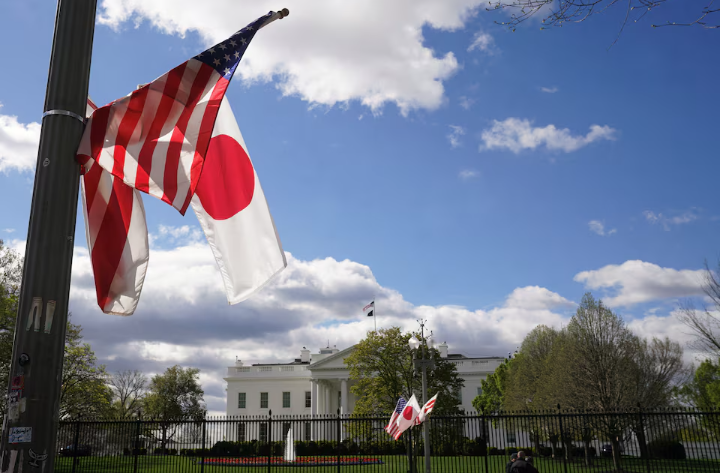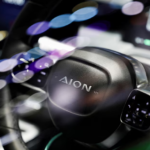This week, U.S. President Joe Biden is in the Philippines and Japan to strengthen security and economic relations as the allies work to counter China‘s increasing power and handle threats from North Korea to the conflicts in Gaza and Ukraine.
Defense relations between Japan and the United States will be improved as a result of Biden’s one-on-one meeting with Japanese Prime Minister Fumio Kishida on Wednesday.
Japan is Washington’s main ally in the Indo-Pacific area and a growingly significant worldwide partner. Kishida, who is struggling at home, will be welcomed to America with tremendous pomp.
Around 200 people will attend a lavish White House supper, and Japanese flags have already been draped over lampposts in Washington.
On Thursday, he will become only the second Japanese leader to address a joint meeting of Congress after his assassinated predecessor Shinzo Abe gave a speech in 2015.
Political analysts say visit is a chance for Kishida to boost dire domestic popularity ratings ahead of a September leadership contest in his ruling Liberal Democratic Party.
The U.S. will hail Japan as a vital regional and global ally and Kishida will be able to bask in praise for defense reforms that have taken Japan further from its post-war pacifism.
Overshadowing the visit is a controversy over the planned $15 billion acquisition of American steel maker U.S. Steel (X.N), opens new tab by Japan’s Nippon Steel (5401.T), opens new tab, a deal some say is “on life support” after criticism by Biden and Donald Trump, his rival in November’s U.S. election.
Also looming over the meetings are Japanese concerns that in any second Trump term he might seek a deal with China that could destabilize the region, revive protectionist trade measures or demand more money for the upkeep of U.S. forces in Japan, worries some analysts and those close to the former president say are overblown.
SUPPORTING THE PHILIPPINES
On Thursday, Biden holds a bilateral meeting with Philippines President Ferdinand Marcos, whom he welcomed in Washington just last year, before the two join Kishida for a trilateral summit expected to focus on countering Chinese pressure on the Philippines in the disputed South China Sea.
“Close cooperation between Japan, the U.S., and the Philippines is crucial for a free and open order based on the rule of law and for economic prosperity in the region,” Kishida said on Friday.
Japan last year delivered air defense radars to the Philippines and is negotiating a reciprocal-access agreement that would make it easier for Japanese troops to train there.
At the weekend, the Philippines said U.S., Japanese, Australian and Philippines warships would conduct a one-day South China Sea exercise on Sunday in support a free and open Indo-Pacific region.
U.S. officials emphasize that summit interactions with the Philippines will cover more than defense, with “consequential” outcomes in areas such as energy and economic security, and major infrastructure projects.
“It’s a really important moment for us to hear from the Philippines about what kinds of support may be most useful,” a senior U.S. administration official told Reuters.
U.S.-JAPAN MILITARY COORDINATION
With concerns that Russia’s Ukraine invasion might embolden Beijing to move against Taiwan, a strategic self-ruled island that produces the world’s most advanced semiconductors, the leaders are expected to discuss plans to upgrade the U.S. military command structure in Japan to make it better able to work with Japanese forces in a crisis.
China claims Taiwan as its own territory despite strident objections from the government in Taipei and has never renounced the use of force to bring it under Beijing’s control.
The three leaders are also expected to announce steps to allow more joint development, and potentially co-production, of military and defense equipment, Deputy Secretary of State Kurt Campbell, a key architect of U.S. Indo-Pacific policy, said last week.
“The current security environment is tough and complex, and we are at a turning point in history,” Kishida said on Friday.
Under Kishida, Japan has pledged to double defense spending to 2% of gross domestic product, which could make it the world’s third biggest military spender. Its plans include acquiring hundreds of cruise missiles that can strike targets 1,000 km (620 miles) away.
Japan has also become important to the U.S. as a potential production base for munitions, including Patriot PAC3 anti-missile systems that will be re-exported to Ukraine, and for its shipyards, which are becoming key for repair of U.S. warships.
The Biden-Kishida summit is expected to address Japan’s future involvement in the three-way AUKUS defense pact between Australia, Britain and the United States, but officials and experts say obstacles remain given a need for Japan to introduce better cyber defenses and stricter rules for guarding secrets.
Amid the Nippon Steel controversy, U.S. officials want to highlight other Japanese investment in the United States. Deals in artificial intelligence, cloud computing, aviation and construction will contribute “to good-paying, strong American jobs,” the senior administration official said.
Space is another focus, with Japan hoping to land its first astronaut on the moon with the U.S. Artemis project that envisages returning humans there by 2026, as competition heats up with both Russia and China.
“This is the dream,” Kishida told the U.S. PBS NewsHour program, “that a Japanese astronaut might be stepping his feet on the face of the moon.”





